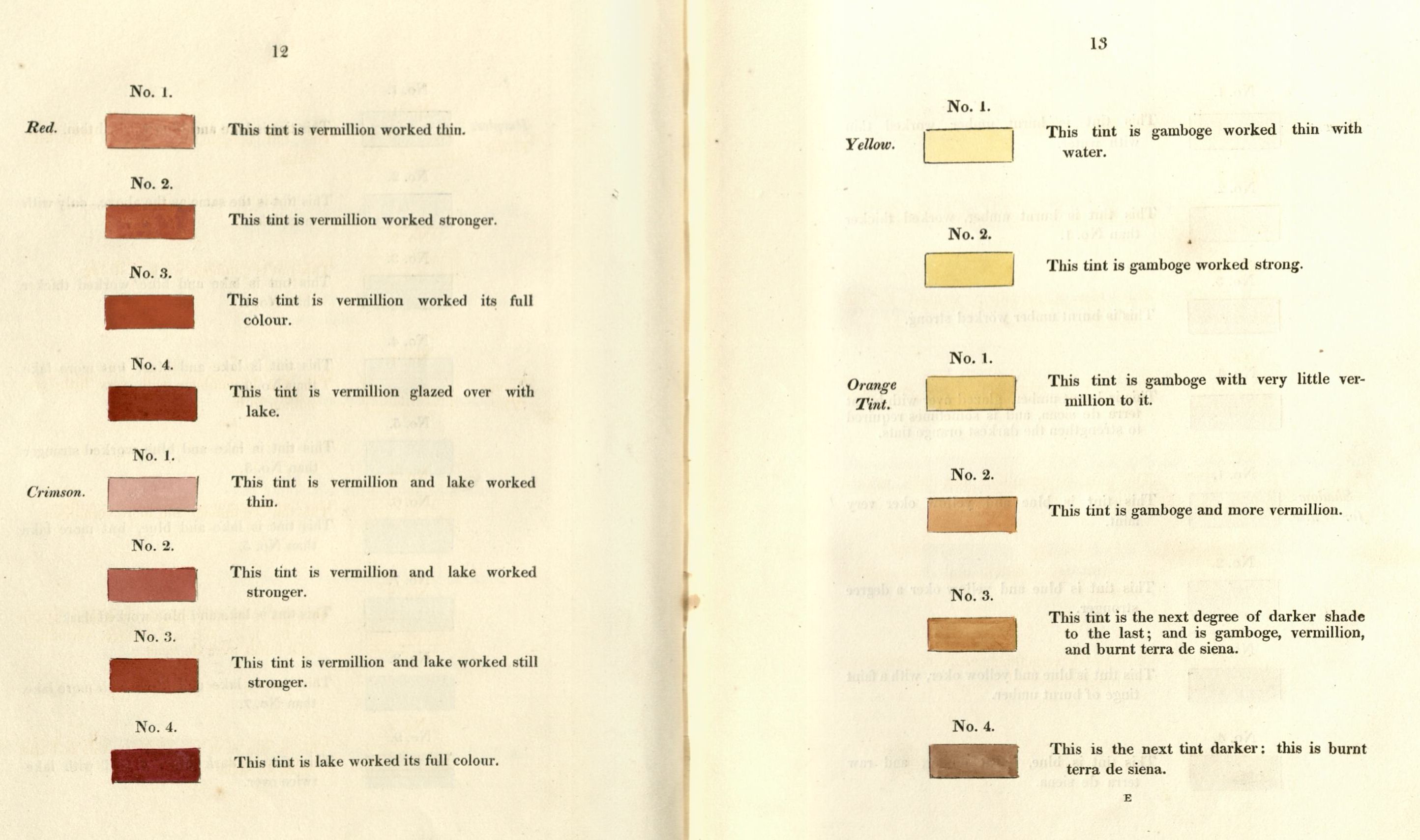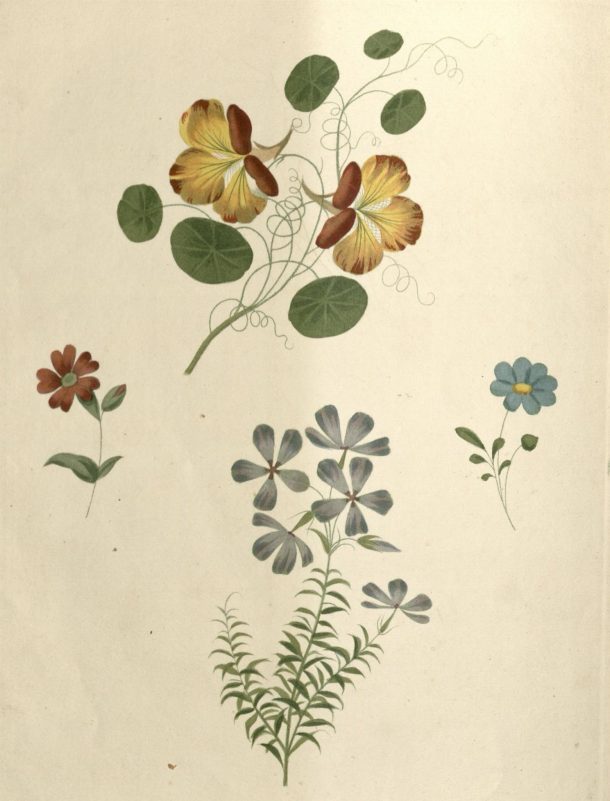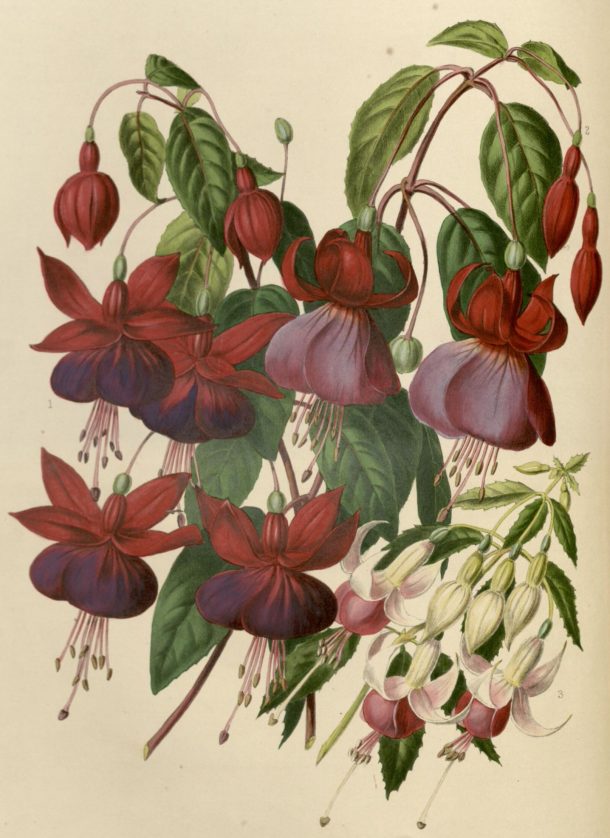One of the main pleasures of taking up a hobby is surely acquiring all the necessary equipment, preferably new, with everything matching and on a professional scale.
Women taking up watercolour painting in 1797 obviously felt the same
“Every lady who has a taste for painting, furnishes herself with a box of colours, probably eighteen, twenty-four or thirty cakes of colours, the latter of which is recommended as the most complete and best”.
Unfortunately this notion is soon squashed in ‘A new treatise on Flower Painting’
“Such a box, or collection of colours, is enough to destroy all hopes of succeeding”
A list of the paltry 10 colours which are “sufficient to answer every purpose” was provided.
Having got past this disappointment though, the rest of the volume concentrates on the techniques necessary to produce quality flower paintings. Pages of leaf and flower shapes to copy and practice colour matching were available, “any lady may have any number of these sheets separately, and the expense is trivial”

Once the basics had been mastered, learning the complex forms and colours of sweetpeas, fuschias and nasturtiums were suggested as lessons, both for guiding the readers to paint well and the equally exacting skill of minute observation.
Unfortunately some things cannot be taught, “A person of taste makes choice of nothing but what is most elegant nature, he will make choice of the most elegant and beautiful colours; whereas, on the contrary, we frequently see some people who will be pleased with the appearance of a thing, with no elegance in its form or design, and will even purchase it in preference to another, that is infinitely more elegant and beautiful”
There was a little comfort offered to those who found themselves unequal to the challenge of actual drawing, pages of pre-printed outlines for colouring which could “save all that time which would be spent in drawing the outlines” were included.

The book, written “At a time when female genius seems to make every effort to exert itself” was first published in 1797. In 1818 a volume with almost identical text was issued under the authorship of George Brookshaw, writer of a number of books on botany and illustration.
In his introduction to the second volume, the author observes that “It is probable that these times will produce female artists who will bear away the palm of flower painting from the other sex.”
He was right of course, some of the greatest of all the Victorian flower painters were women, many of them self-taught.
Augusta Withers (1793-1877), painter of some of the most exquisite, accurate botanical illustrations ever seen, was turned down for a job at Kew Gardens apparently because she was a female. Amongst many other things, she was the unacknowledged artist of many plates for ‘Orchidaceae of Mexico and Guatemala’ a colossal work which has never been equalled in scale and beauty.

Diane Spaul A New Treatise on Flower Painting or Every Lady her own Drawing Master, NAL 38041800884165 © Victoria and Albert Museum, London



Outstanding…!